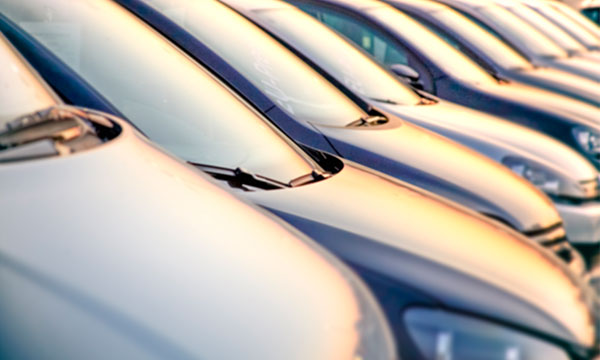The wheels keep turning despite 2018 car sales slow down

It’s no secret that key economic drivers put the brakes on Australian new car sales in 2018.
Factors such as the tightening of bank lending controls, a slowing property market, and extensive drought conditions all contributed to a three per cent drop-off in new vehicle sales. Significantly, it marked the first decline in new cars sales across the country for four years.
But despite the less than ideal performance, the news wasn’t all bad. Indeed, the heavy commercial segment actually recorded a record year, with the sector reporting sales of 41,426 units – up 12.4 per cent on the 2017 tally. Leading the charge was the Toyota Hilux, which ended 2018 as Australia’s most popular car for the third consecutive year. Once again, it edged out the Ford Ranger for the top spot.
SUV success story
There were also other interesting highlights from 2018. Key among these was that fact that SUVs accounted for 43 per cent of all sales. In contrast, passenger vehicles dropped five points, accounting for just 32.8 per cent of the market share. This marks the first time that passenger vehicles have made up less than one-third of the market. At the same time, light commercial vehicles managed to chalk up just 20.6 per cent market share, despite the fact that two of the category’s major players — the Toyota HiLux and the Ford Ranger — were the top-two selling vehicles in the market.
All hail the champion
Of course, there are still those that can claim to be big winners. For the 16th year in a row, Toyota took the crown as undisputed market leader with a final sales haul of 217,061 units. Impressively, the company successfully negotiated the market decline and even achieved a small degree of growth in its first year as a full-line importer of all its vehicles. Moreover, 2018 marked the 22nd time that the Japanese giant has grasped the coveted mantle of market leadership. Even more impressive was the fact it led the market in eight segments.
Toyota’s sales figures were almost double those of Mazda – the market’s number two performer. The company managed 111,280 units, recording a decline just above the market average. Third spot in the rankings, meantime, went to Hyundai, which chalked up 94,187 units – down 2.9 per cent.
Emerging from the pack
Other brands also emerged as standouts in 2018. Kia grew 7.5 per cent to record 57,699 sales, edging out Volkswagen (56,620 – down 2.4 per cent) in the process. Honda, meantime, ended the year 10.1 per cent up with 51,525 sales. Other brands that grew their sales volumes included Alfa Romeo, Isuzu Ute, Jaguar, MG, Skoda, and Volvo Car, which improved its results by 43 per cent.
Importantly, customer access to these market-leading cars needn’t be a challenge, with Melbourne Finance providing brokers with the opportunity to finance the market’s most popular vehicles. Tightening lending standards also doesn’t have to mean that a great new car is out of the question. Melbourne Finance has over 30 lenders to choose from, ensuring many solutions to suit a wide range of budgets and individual situations.
A tough crowd
Of course, there’s no denying that the car sales industry and certain major manufacturers faced significant challenges in 2018. Overall, the year ended with 1,153,111 vehicle sales. This is in contrast to the all-time record figure of 1,189,116 achieved the previous year. Every state and territory (except Tasmania) saw declines. New South Wales accounted for the biggest reduction in sales volumes — its recorded 6.6 per cent drop equating to 26,306 vehicles.
It was also impossible to miss one unmitigated disaster story, with once powerful Australian industry heavyweights Ford and Holden recording their lowest sales figures since the 1960s. Of the two, Holden fared by far the worst, dropping a staggering 32.7 per cent to end the year with just 60,751 unit sales. Ford, meantime, recorded sales of 69,081 units for an 11.6 per cent drop.

